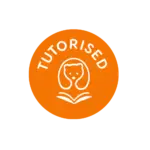The PISA Test and Finnish Education: A Global Model for Learning Excellence
Revolutionizing Literacy Assessments: Lukuseula Simplifies Reading Skill Evaluation for Teachers and Students Alike
Table of Contents
Introduction: Why Finland Caught the World’s Attention
It’s not every day that a small country of just 5.5 million people becomes a global leader in education. Yet, Finland has done precisely that. Since the first PISA (Programme for International Student Assessment) results were released in 2000, Finland has consistently ranked among the top-performing countries in reading, math, and science. What’s truly remarkable isn’t just the high scores, but how Finland achieves them.
While many high-achieving countries rely on rigorous testing, long school hours, and intense academic pressure, Finland has taken a completely different route. Finnish schools focus on equity over competition, creativity over rote learning, and student well-being over stress. The outcome? Students excel academically while also enjoying school and reporting high levels of life satisfaction.
This rare combination of academic success and student happiness has made Finland a beacon of educational innovation, prompting educators and policymakers around the world to ask:
What’s their secret?
In this article, we’ll explore the core factors behind Finland’s PISA success, highlight what makes its education system unique, and discuss lessons that other countries can learn.
What Makes Finland’s Education System Stand Out?
1. Highly Trained Teachers, Highly Trusted Professionals
In Finland, teaching is one of the most respected professions. Candidates for teaching positions must hold a master’s degree, and only the top 10% of applicants are admitted into teacher training programs. But Finland doesn’t stop at selecting the best candidates—it also empowers them. Once in the classroom, teachers are given significant autonomy to craft lessons and adapt the curriculum to their students’ needs.
There’s little micromanagement or pressure from high-stakes standardized testing. Instead, teachers are trusted to make the best decisions for their students, fostering a culture of respect and professionalism.
Why it matters:
When teachers are well-trained and trusted, they can focus on inspiring students, encouraging creativity, and nurturing a genuine love of learning—rather than merely “teaching to the test.”
2. Minimal High-Stakes Standardized Testing, Maximum Learning
Unlike many countries that subject students to a barrage of standardized tests, Finland takes a low-stakes approach. Finnish students take only one major national exam, the Matriculation Examination, at the end of upper secondary school. Until then, assessment is largely formative, with teachers providing regular feedback to help students improve rather than ranking them by test scores.
This relaxed approach reduces stress and encourages students to focus on deep learning rather than rote memorization. It also fosters the development of critical thinking, problem-solving, and creativity—skills that are essential in real life but often overlooked in test-driven systems.
Why it matters:
By prioritizing learning over testing, Finland ensures that students develop a genuine understanding of subjects, equipping them to thrive in both academics and life.
3. Equity at the Core of the System
A defining principle of Finland’s education system is equity. Public schools are a cornerstone of Finland’s education system, providing high-quality education to students in both urban and rural communities. While there are some variations in school quality between different regions, ongoing efforts and initiatives are dedicated to ensuring equitable educational opportunities for all Finnish students. Every child, regardless of their background, receives access to free meals, transportation, healthcare, and learning materials.
In Finland, socioeconomic status plays a minimal role in determining academic success. This contrasts sharply with many other countries, where family income often heavily influences educational outcomes.
Why it matters:
When educational opportunities are equitable, more students succeed, achievement gaps shrink, and society benefits as a whole.
4. Play, Creativity, and Well-Being Matter
In Finnish schools, play isn’t an afterthought—it’s a priority, especially in the early years. Formal schooling doesn’t begin until age seven, and even then, the emphasis remains on play-based learning, social development, and curiosity-driven exploration. Finnish students enjoy shorter school days, longer holidays, and plenty of recess time.
As students progress, creativity continues to be a central focus. Schools incorporate project-based learning, hands-on activities, and interdisciplinary approaches to cultivate well-rounded individuals who can think critically and solve problems.
Why it matters:
When students have time to play, explore, and interact socially, they become more engaged learners and, ultimately, more well-adjusted adults.
5. Collaboration Over Competition
Rather than fostering a cutthroat environment where students vie for top rankings, Finnish schools emphasize collaboration. Students often work together on projects, help each other learn, and are encouraged to see their classmates as teammates rather than rivals.
This collaborative spirit extends to teachers as well, who frequently share best practices and collaborate on professional development. The result is a supportive, low-pressure atmosphere where both students and teachers thrive.
Why it matters:
In the real world, success often depends on teamwork. Finland’s approach prepares students not just to excel individually, but to collaborate effectively, a vital skill in any career.
What Other Countries Can Learn from Finland
While Finland’s education system cannot be directly replicated everywhere, there are several key lessons that can be applied globally:
- Trust and Empower Teachers: Provide educators with rigorous training, resources, and autonomy.
- Promote Equity: Ensure that all students have equal access to high-quality education, regardless of their background.
- Reduce Over-Reliance on High-Stakes Standardized Testing: Focus on formative assessments that promote learning rather than ranking.
- Prioritize Well-Being: Recognize that emotional and social development are as important as academic success.
- Encourage Collaboration: Foster teamwork and mutual support among both students and educators.
Final Words: Finnish Education Principles + Tutorised = Super Education
While Finland’s education system offers a compelling model, replicating its success requires the use of evidence-based tools that address individual learning needs. This is where Tutorised, Finland’s most widely used online assessment tool, makes a significant difference.
Tutorised offers state-of-the-art solutions that help educators diagnose reading, writing, language, and math difficulties, track student progress, and deliver personalized interventions. With decades of experience in the educational field and advanced technology, Tutorised enables teachers to identify where students need intervention and tailor their instruction accordingly.
Whether you’re a school looking to adopt smarter tools or an educator seeking ways to improve outcomes, Tutorised’s digital platform can be an invaluable asset. It perfectly complements Finland’s approach—focused, personalized, and designed to foster a lifelong love of learning.
Ready to transform your classroom with smarter, data-driven tools?
Suggested readings

Sentence Verification: Your Rapid-Fire Comprehension Check
Discover how the Sentence Verification Technique empowers educators to pinpoint reading comprehension gaps with swift true/false sentence probes

The Simple View of Reading: A Comprehensive Framework for Literacy Development
Discover how decoding and language comprehension work together to drive literacy, and explore practical, evidence-based strategies to help every student become a confident reader.
